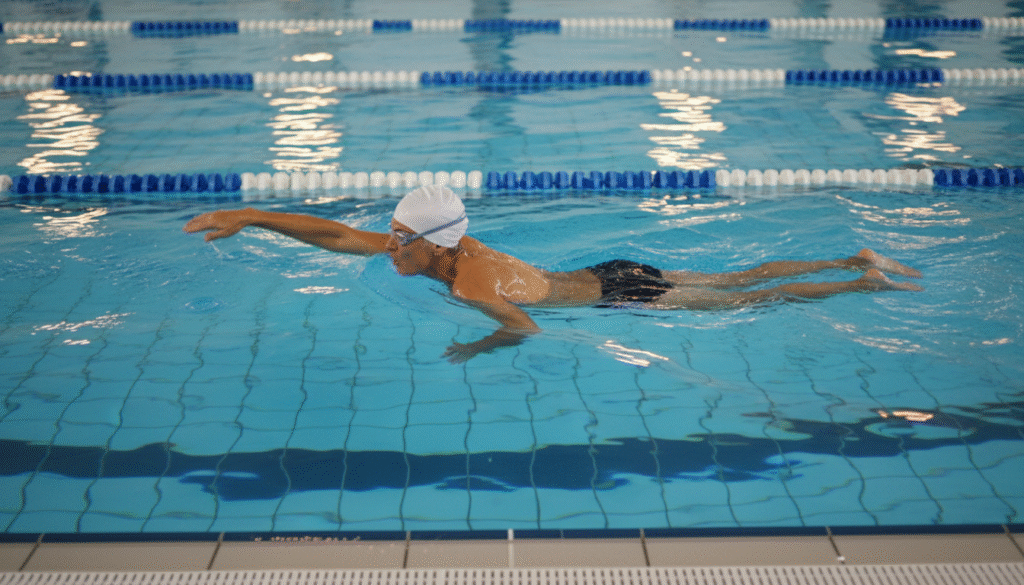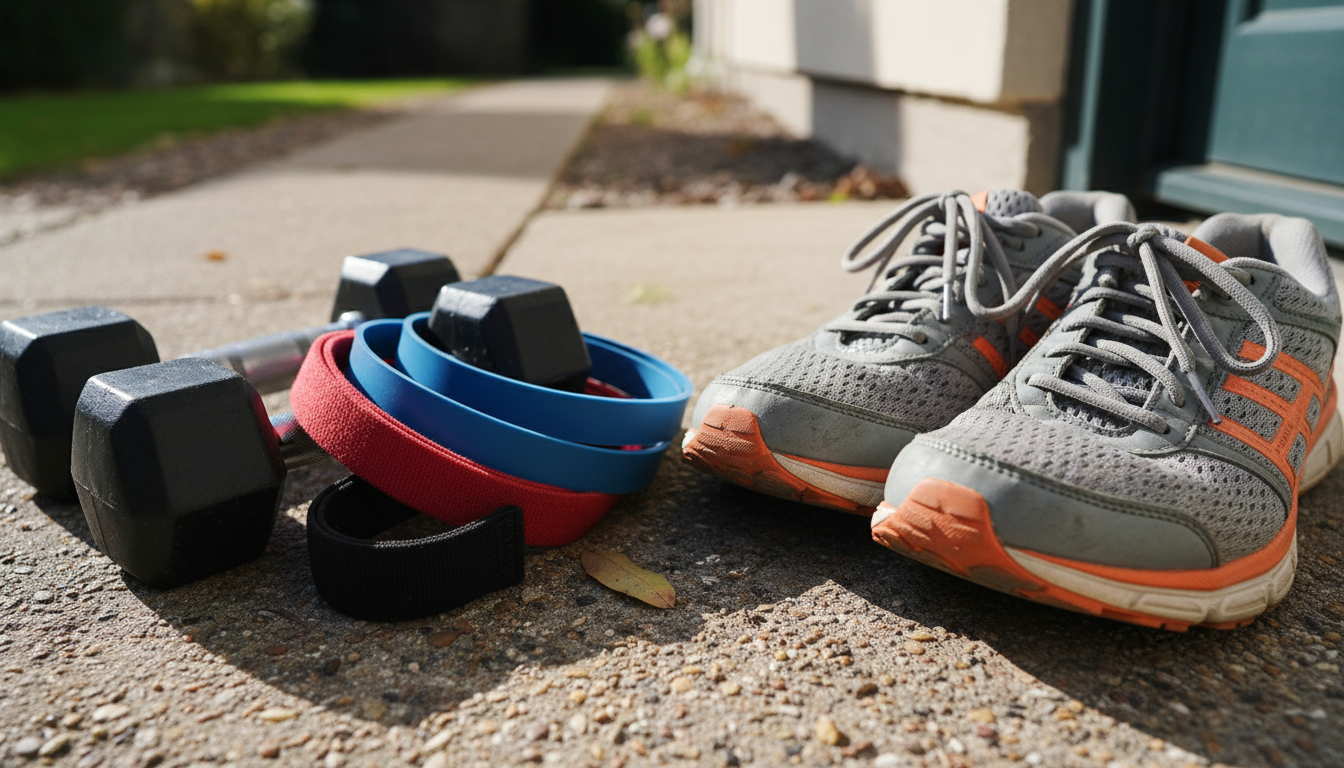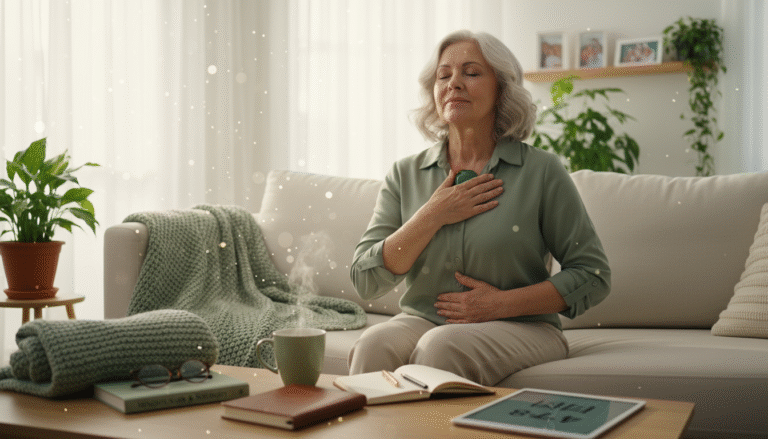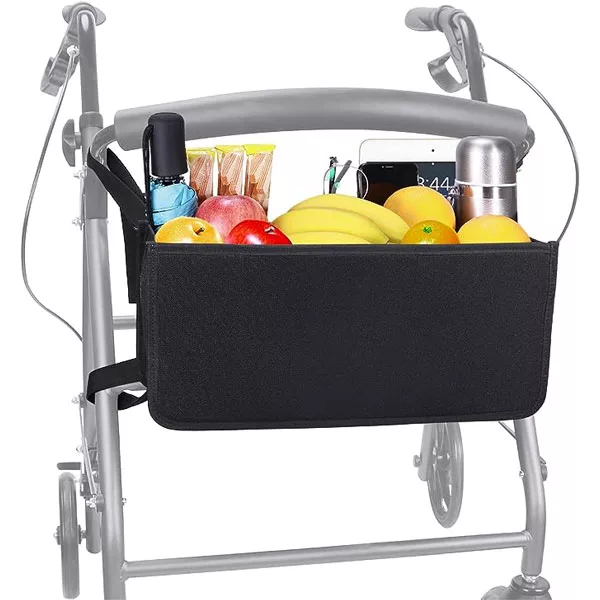Why Exercise Is an Important Component of Good Physical Fitness
Discover why exercise is an important component of good physical fitness—more energy, better mood, deeper sleep, and a longer, healthier life—with simple ways to start today.
Let’s talk like real people for a second. Why exercise is an important component of good physical fitness isn’t about chasing a “perfect” body or becoming a gym person overnight. It’s about feeling better in your own skin—more capable, less exhausted, and a little more proud of yourself at the end of the day. I think of exercise like the friend who shows up when you’re moving apartments: not glamorous, not loud, just helpful. No speeches, no judgment, just “where’s the next box?”
Is it always fun? No. Sometimes it’s you, a stubborn shoelace, and a playlist that refuses to pick a vibe. But movement is one of those rare habits that quietly makes almost everything else easier—your mood, your sleep, your patience, your joints, your long-game health. I’ll show you why it matters, how it plays out in normal life, and how to start in a way that doesn’t blow up your schedule.
Grab a drink. Coffee, tea, lemon water you promise you’ll refill this time—whatever. Let’s get into it.
What Does “Good Physical Fitness” Even Mean?

Not the influencer version. The real-life version. Good physical fitness means your body can do the stuff your life actually asks of it. Carrying groceries. Lifting a kid or a suitcase. Climbing stairs. Sitting on the floor and getting back up without negotiating with your knees. It’s a mix of:
- Endurance: you can keep going without fizzling out.
- Strength: you can push, pull, lift, carry, and feel stable doing it.
- Mobility and flexibility: your joints move the way they’re supposed to.
- Balance and coordination: you stay steady, even on those sneaky uneven sidewalks.
- Body composition: enough muscle to support you, sturdy bones, and a healthy amount of body fat for you.
Here’s where it shows up:
- You make one trip from the car with the bags because you refuse to go back. Hero status.
- You walk into a meeting from the farthest parking spot and don’t need to pretend you weren’t winded.
- You reach for something on the top shelf and don’t feel a lightning bolt in your back.
- You sleep like a human again.
And don’t sleep on bone health. Weight-bearing movements and resistance work tell your bones to stay dense and strong, which pays off later by lowering osteoporosis risk. It’s not flashy, but it’s the “older-you insurance policy” most of us wish we started sooner.
This is where why exercise is an important component of good physical fitness clicks. Movement is training for real life. Netflix can be excellent for the soul. It just won’t make stairs easier. Ten-minute walks will.
Exercise and Your Cardiovascular System: The Heart of the Matter

Cardio needs a rebrand. It’s not punishment. It’s maintenance for your heart, blood vessels, and blood pressure. Brisk walks, easy bike rides, steady swims—they all count. If you can do it with a podcast or a friend, even better.
What cardio quietly does:
- Raises “good” HDL cholesterol and helps lower triglycerides.
- Keeps blood pressure in a healthier range.
- Makes your heart more efficient, so daily stuff doesn’t feel like a workout.
The simplest, most trustworthy guideline is still this: aim for about 150 minutes a week of moderate activity (or 75 minutes of vigorous). Hit that, and you’ll lower your risk of heart disease, stroke, and hypertension. It’s hard to find a better return on time. If you want the official word, it’s here: American Heart Association – Physical Activity Recommendations.
When I started “jogging,” it looked less like running and more like controlled falling. A neighbor’s dog watched me like I was a suspicious raccoon. Two weeks later, stairs stopped feeling like a dramatic event. That’s cardio doing exactly what it does: improving how your body moves oxygen around. No confetti, just results.
Strength Training: More Than Just Bulking Up
Strength training isn’t a niche for people who love chalk and deadlift socks. It’s for everyone who wants to stay capable, independent, and less creaky. You can do it at home with a band, a couple dumbbells, or your body weight. You don’t need perfect form videos or a rack.
Why it’s worth your time:
- Muscle helps you burn a bit more at rest. It’s not magic—but it helps.
- Strong muscles support joints and reduce injury risk.
- You move better in daily life: lifting, carrying, bending, climbing, reaching.
- It helps build and maintain bone density (this matters more each year you’re alive).
People who strength train even twice a week often report less joint pain and better mobility as they age, and research backs that up with improved function and independence in older adults. If you want a simple start that hits your big muscle groups, try this:
- Squats (or chair sit-to-stands)
- Push-ups (wall or knees are perfect)
- Hip hinges (bowing motion; hold a backpack for weight)
- Rows (with a band or dumbbell; a sturdy post or door hinge helps)
- Plank (knees down if needed)
Do 8–12 slow, controlled reps of each, rest, and repeat for 2–3 rounds. When the last few reps feel hard but your form is still decent, that’s the sweet spot.
Mental Health Perks: Exercise as Your Brain’s Best Friend
Here’s the curveball: the biggest benefit for many of us isn’t physical at all. Movement and exercise helps your brain feel more steady. It kicks out endorphins, dopamine, and serotonin—your body’s built-in “feel a little better” team. It doesn’t fix life, but it changes how you handle it.

On days when my brain feels like a browser with 47 tabs open and music playing from somewhere, a 15-minute walk moves me from “stuck” to “okay, I can deal.” If that sounds familiar, you’re not alone—and the research is kind: regular movement can be as effective as antidepressants for mild to moderate depression, with fewer side effects. Here’s a good summary: Harvard Health – Exercise and Depression.
And it doesn’t have to be intense. Stretch with a playlist. Walk and talk. Dance to one song in your kitchen. Your nervous system responds to gentle motion too.
Sleep Better, Feel Better: How Exercise Helps You Catch Those Zzzs
If you’ve ever stared at the ceiling replaying your “you too” moment to the movie theater guy who said “enjoy your movie,” this is for you. Movement helps you fall asleep faster and get more slow-wave sleep—the deep, restful kind that makes mornings friendlier. Johns Hopkins has a solid explainer: Exercising for Better Sleep.
One small thing: if you’re doing high-intensity workouts, try to wrap them up a few hours before bed. Evening movement is great—just keep it lighter (walks, mobility, gentle yoga) if your brain tends to rev up.
Weight Management from Regular Physical Activity: The Calorie-Burning Bonus
Let’s talk about weight like adults. Exercise helps with weight management, yes—but the bigger win is body composition, steadier energy, and that feeling of “I can trust my body again.”
- Cardio helps burn calories and fat.
- Strength work builds muscle, which raises your baseline burn a bit.
- Regular movement helps you avoid the “lose fast, regain faster” loop because it protects muscle and supports your metabolism.
I’ve tried the dramatic fixes. They were dramatic…and temporary. What actually worked was a boring, repeatable mix: walking after meals, two simple strength sessions a week, and movement “snacks” during the day. Not exciting. Very effective.
Physical Activity Guidelines: How Much Do You Really Need?
You don’t need a new personality. The basic plan works:
- 150 minutes/week of moderate activity (or 75 minutes vigorous), plus
- 2 days/week of strength training for major muscle groups.
Break it up however you need—10s, 15s, 30s. It all counts. Yard work counts. Cleaning counts (the kind of cleaning where you actually sweat). Walking meetings count. The friendly, official breakdown is here: HHS Move Your Way – Physical Activity Guidelines.
How it should feel:
- Moderate: you’re breathing heavier but can still talk (singing…not recommended).
- Vigorous: short phrases only; your lungs are in charge now.
Overcoming Barriers: Making Exercise a Habit That Sticks
Knowing why exercise is an important component of good physical fitness and actually doing it are two different skills. Life is loud. Motivation disappears. The couch is persuasive. The fix isn’t willpower. It’s tiny, repeatable steps and low-friction choices.
What helps:
- Start microscopic. Five minutes is enough to count and enough to repeat.
- Make it obvious: shoes by the door, mat on the floor, water bottle filled.
- Stack it: after coffee, walk five minutes. After your last meeting, 10 squats.
- Keep it simple: if you need seven props and a tutorial, you won’t do it on a tired day.
- Track streaks. Short, forgiving streaks create momentum (e.g., three days in a row, then reset).
The day you don’t feel like it is the day the five-minute rule saves you. It keeps the lights on. Motivation will catch up.
Start Today: 10-Minute Exercise Wins
Pick one. Do it today. It all counts.
- 10-minute brisk walk after lunch. Loop the block twice. Done.
- 2 rounds: 10 squats + 10 wall push-ups + 20-second plank.
- Mobility mini: neck rolls, shoulder circles, hip hinges, ankle rotations. Smooth, gentle.
- Stairs: 60 seconds up/down, rest 60; repeat 5 times.
- If you have a kettlebell: 3 rounds of 20 swings, rest as needed.
- Evening calm-down: 5–8 minutes of gentle yoga or floor stretches.
Easy habit hooks:
- After coffee → 5-minute walk
- After every Zoom → 10 bodyweight reps
- When the credits roll → 2-minute plank or side planks
- While the kettle boils → countertop push-ups + calf raises
The Social Benefits of Exercise: It Can Be Fun and Connect You

You don’t have to white-knuckle this alone. Everything is easier with people. Walk with a friend. Try a beginner class. Join a low-stakes pickleball game. Weekend hike. Park laps while the kids play.
Honestly? Some of the best conversations I’ve had happened on walks. Side-by-side is less intense than face-to-face. You point at birds. You solve three small life problems. You come home lighter—and accidentally hit your step goal. Text a friend: “Walk at 7? Low drama. High gossip.” It works.
The Long Game: How Exercise Helps You Live Longer and Healthier
Here’s the part that keeps me honest: regular physical activity isn’t just for today’s mood or next month’s jeans. It’s for a longer life—and better years inside that life.
- People who hit the activity guidelines tend to live longer and spend more of those years in good health.
- Lower risk of heart disease, type 2 diabetes, and some cancers.
- Better brain health as you age—movement supports blood flow to the places that handle memory and focus.
Large cohort studies and meta-analyses (think: lots of people over lots of years) have linked regular physical activity with lower all-cause mortality; The Lancet has several big papers on this if you want the deep dive: The Lancet – Physical Activity and Mortality.
Flip side: long stretches of sitting aren’t great for health—even if you work out. A 2015 meta-analysis in the Annals of Internal Medicine tied prolonged sitting to higher all-cause mortality, independent of exercise. The fix is simple: stand up every 30–60 minutes, take a 1–2 minute lap, stretch, refill water. Source: Annals of Internal Medicine – Sedentary Time and Mortality.
It’s not about being perfect. It’s about staying in motion, in ways you can see yourself doing next month and next year.
A Simple Weekly Plan You Can Actually Do
Use this as a template. Move days around. Swap activities. Make it yours.
- Monday: 25-minute brisk walk + 5-minute mobility
- Tuesday: 20-minute strength (squats, push-ups or wall push-ups, rows, glute bridges) + 5-minute stretch
- Wednesday: 30-minute cycling, swimming, or a hillier walk
- Thursday: 15-minute intervals (1 minute faster, 1 minute easy x7–8) + 10-minute stretch
- Friday: 20-minute strength (lunges or split squats, hip hinges/deadlifts, plank, suitcase carries with dumbbells or a packed backpack)
- Saturday: 30-minute “fun cardio” (hike, dance class, pickleball, shoot hoops, family ride)
- Sunday: 20–40-minute easy walk or gentle yoga
Progress without drama:
- Add 5 minutes to one day each week, or
- Add one extra set to your strength moves.
- Keep one truly easy day. Your body improves when you recover.
No-gear, low-impact options:
- Chair sit-to-stands instead of squats
- Wall push-ups instead of floor push-ups
- Step-ups on stairs (hold the rail)
- Towel rows wrapped around a sturdy post
- March in place during calls
- Several 5-minute walk “snacks” throughout the day
Wrapping It Up: Why Exercise Deserves a Spot in Your Life

Here’s the heart of it: why exercise is an important component of good physical fitness comes down to how life feels. Your heart steadies. Your brain softens its edges. Your sleep deepens. Your bones and muscles back you up. Your patience stretches a little farther. And yes—your sex life can improve (regular physical activity can enhance arousal for women and improve erectile function in men). Not a bad list for a habit that doesn’t require a membership.
Exercise isn’t punishment for what you ate. It’s a way to take yourself seriously—to take care of the one body that carries you through every single day. Start where you are. Do what you can. Keep going.
A quick safety note: If you’re older, managing a medical condition, pregnant/postpartum, or returning after a long break, check with your doctor first. It’s a short conversation that can save you a lot of guessing.
Three small steps to kick this off today:
- Pick one 10-minute option from the Start Today list.
- Put it on your calendar like a real appointment.
- When you finish, write one line about how you felt.
That’s it. That’s your spark. Stack those tiny wins and let momentum do what motivation won’t.
Close this tab. Lace up. One small walk. You’ll come back a little lighter—and tomorrow, it’ll be just a bit easier to go again. That’s how real, human fitness gets built.







